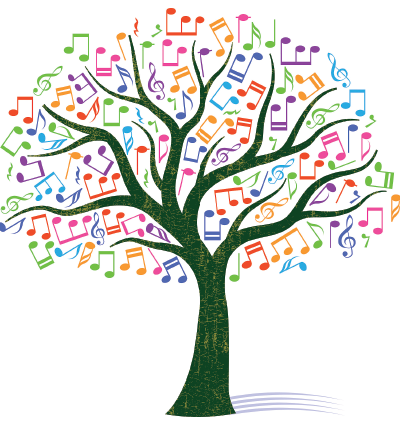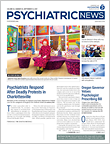“Music has charms to soothe the savage breast,” wrote William Congreve in 1697. More than 300 years later, researchers are finding that the charms of music extend to soothing a host of physical and mental health issues as well.
The use of music as a healing tool dates to the writings of Aristotle and Plato, if not before, according to the American Music Therapy Association. In the late 18th and early 19th centuries, references to music therapy in the medical literature began to appear, and in the latter part of the 1800s, the first recorded music therapy intervention in an institutional setting took place, as did the first recorded systematic experiment in music therapy, which used music to alter dream states during psychotherapy.
In the 20th Century, the profession of music therapy formally began after World Wars I and II when musicians, both amateur and professional, visited hospitalized veterans who were suffering from war-related physical and emotional trauma. When the doctors and nurses observed the patients’ physical and emotional responses to the music, they requested that hospitals hire musicians to play on an ongoing basis.
Music therapy generally includes active music making, music listening, and discussion. Because music stimulates the senses and is a means of communication and expression, it is considered a viable technique even for those with psychosocial, affective, cognitive, and communicative needs who may resist other treatment approaches, the American Music Therapy Association reports.
A review of 17 studies published online on May 2, 2017, in the Cochrane Database of Systematic Reviews, for example, found that musical interventions—whether delivered individually or to groups, and with both active and receptive musical elements—appeared to lessen the symptoms of depression in patients with dementia.
Cochrane reports that the search for music therapy reviews has been on the upswing of late, particularly in the areas of music therapy for depression, autism spectrum disorder, and dementia. A Cochrane study published online on August 17, 2016, on the effects of music on anxiety, depression, pain, fatigue, and quality of life for cancer patients also made headlines.
Western Psychiatric Institute and Clinic music therapist Robert G.H. Miller, M.S., has found that music therapy works well in a psychiatric setting for patients of all ages.
“We all have a relationship with music,” Miller told Psychiatric News. “It’s a tool that we can use with everyone.” Miller was also the lead author on a study published in the July 2013 issue of the Arts in Psychotherapy, which reported that therapeutic breathing exercises and listening to music reduced perceived stress levels of clients and visitors in a psychiatric emergency room setting.
As the average stay at Western Psychiatric is 3 to 14 days, when it comes to the use of music therapy, “we jump right in,” said Miller, with such therapeutic techniques as singing, instrumental improvisation, and songwriting.
“The creative arts in general, and music especially, can provide a direct and visceral experience to patients,” said Miller. He added that patients respond to the time-ordered structure of a song, with its beginning, middle, and end, which differs from more open-ended treatment tools such as talk therapy.
Music Offers Connection
Daniel Kakuska, M.D., a board-certified psychiatrist and leader of the music therapy group at the Retreat at Sheppard Pratt Health System in Baltimore, told Psychiatric News that for people who find it difficult to communicate verbally, music offers a way to connect both to themselves and to others. In the music sessions, a resident can suggest a song for the group to sing together. Often the song relates to a specific memory or special event in the patient’s life and is an opportunity for the patient to share personal information in a non-threatening way.
Singing is one aspect of the “creative happenings” at Sheppard Pratt, said Kakuska, who is not a trained music therapist. Along with traditional psychotherapy, adjunct therapies such as drumming circles, poetry, and artwork provide the patients—who can range from 18 to their 80s—with a broader expressive experience.
Kakuska acknowledged that music therapy was once considered “lightweight” when it comes to therapeutic interventions, but that is much less the case today. The American Music Therapy Association, for example, recently hosted “Music and the Mind,” an educational event that was part of Sound Health, a collaborative program between the National Institutes of Health and the John F. Kennedy Center for the Performing Arts.
The full day of sessions included interactive presentations and performances on “Breakthroughs With Music Therapy: Recovery, Resilience, Quality of Life,” along with additional sessions on music and child development; creative aging; and jazz, creativity, and the brain.
Effective for Range of Conditions
The connections between music and healing are also the impetus behind the creation of the Johns Hopkins Center for Music and Medicine, a collaboration between Hopkins’ health sciences division and Peabody Institute, which trains musicians at all levels.
Co-director Alexander Pantelyat, M.D., a neurologist and musician himself, told Psychiatric News that the center has a multi-pronged purpose: to develop, use, and research evidence-based interventions involving rhythm and music for a range of conditions, including Alzheimer’s disease, Parkinson’s disease, stroke, epilepsy, and autism, as well as non-neurological conditions, in addition to developing research and clinical care to treat and prevent injuries commonly seen in professional musicians.
Pantelyat is researching the effects of singing in a weekly chorus on the voice, mood, memory, and quality of life for individuals with Parkinson’s disease.
In general, said Pantelyat, more research is needed overall on the effects of music on both mental and physical health. Nevertheless, he believes that this is an ideal time for the creation of the center.
“There are still many open questions,” he said. “But the time is right for exploring them.” ■
“Music-Based Therapeutic Interventions for People With Dementia” can be accessed
here. “Music Therapy and Cancer Patients: Cochrane Review Update” is available
here. “The Impact of Breathing and Music on Stress Levels of Clients and Visitors in a Psychiatric Emergency Room” is posted
here. “Sound Health: Music and the Mind” can be viewed
here. Information about the Johns Hopkins Center for Music and Medicine can be accessed
here.

